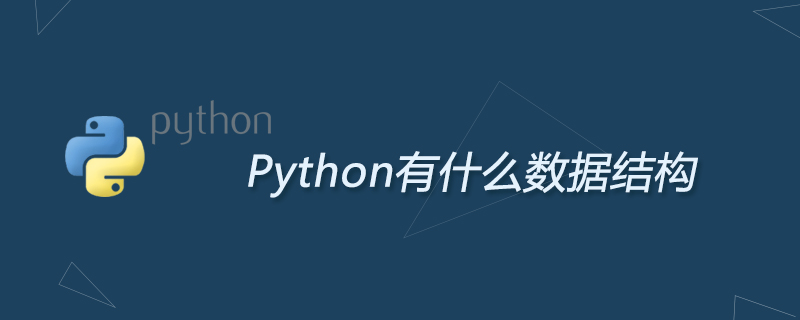Home >Backend Development >Python Tutorial >What data structures does Python have?
What data structures does Python have?
- (*-*)浩Original
- 2019-06-27 13:53:338358browse
Built-in Data Structure in Python: list, tuple, dictionary, set, only some of the key points are covered.

Salient features of the list: (Recommended learning: Python video tutorial)
in the list Each element is variable, which means that each element can be modified and deleted;
The list is ordered, the position of each element is determined, and each element can be accessed using an index;
The elements in the list can be any object in Python;
can be any object, which means that the elements can be strings, integers, tuples, or lists in Python. object.
Tuple tuple
Key point: Tuple is similar to List in usage, but once Tuple is initialized, it cannot be modified. There is no append(), insert in List. (), pop() and other modified methods can only query elements
Dictionary dict (dictionary)
The concept of the full name of dictionary is based on The dictionary prototype in real life uses name-content to construct data. Python uses key-value storage, which is map in Java and C.
The salient features of dict:
The data in the dictionary must appear in the form of key-value pairs, that is, k, v:
key: It must be a hashable value, such as intmstring, float, tuple, but list, set, and dict are not allowed
value: any value
The key cannot be repeated, but the value can be repeated
If a key is repeated, only the last value corresponding to the key will be recorded in the dictionary
The key (key) in the dictionary is immutable, what is an immutable object, and cannot be modified; and the value (value) is It can be modified and can be any object.
In the dict, the storage location of the value is calculated based on the key. If the same key is calculated each time and the result is different, then the interior of the dict will be completely confused.
SET set
Set is closer to the concept of mathematical set. Each element in the collection is an unordered, non-duplicate arbitrary object.
You can use sets to determine the affiliation of data, and you can also use sets to reduce duplicate elements in the data structure. Sets can perform set operations and add and delete elements.
The data in the collection is out of order, that is, indexes and sharding cannot be used
The data elements within the collection are unique and can be used to exclude duplicate data
Data within the collection: str, int, float, tuple, frozen collection, etc., that is, only hashable data can be placed inside
For more Python related technical articles, please visit the Python Tutorial column to learn!
The above is the detailed content of What data structures does Python have?. For more information, please follow other related articles on the PHP Chinese website!

